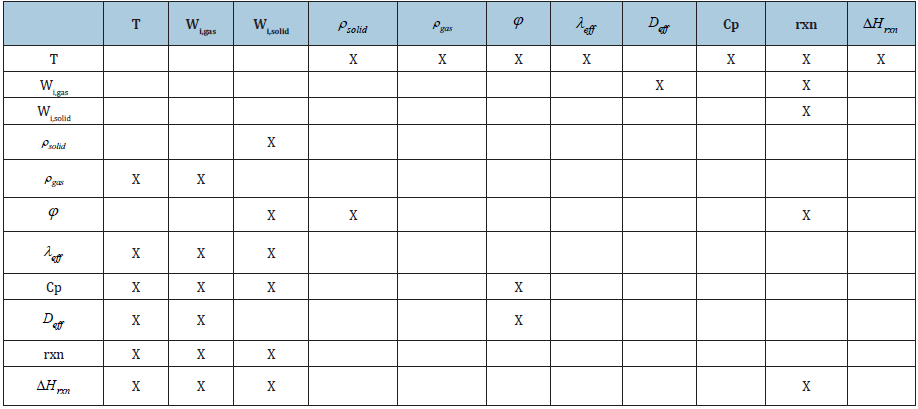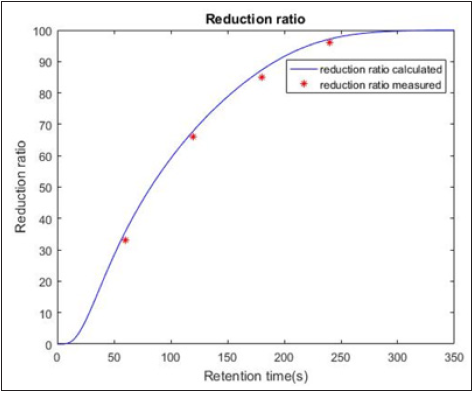- Submissions

Full Text
Aspects in Mining & Mineral Science
Potentials and Importance of Detailed Computational Codes in Mining and Mineral Applications/Industries
Khoshandam Behnam* and Baghshani Ehsan
Semnan University, Faculty of Chemical, Petroleum and Gas Engineering, Iran
*Corresponding author: Khoshandam Behnam, Semnan University, Faculty of Chemical, Petroleum and Gas Engineering, Iran
Submission: February 10, 2021;Published: April 09, 2021

ISSN 2578-0255Volume6 Issue3
Abstract
Mathematical models are low cost and time consuming tools to evaluate the characteristics of process and predict the influence of changes in parameters and conditions of process. This letter suggest the vendors of the traditional and commercial simulators or industries owners to use the precise and detailed models associated with computational codes that consider the contributions of all parameters affecting the process in order to obtain more reliability and accuracy and maybe process control. A typical detailed computer code is presented for the heart of process involved solid-solid chemical reactions.
Introduction
Profitability and efficiency have always been the principal issues in various economic enterprises, including the mining and mineral industries. The importance of production planning for achieving a high performance has made it necessary to study the characteristics and behaviors of mineral resources and processes in order to obtain a realistic insight and implementation of practical strategies with optimal operating conditions [1]. Experimental evaluation of all parameters and scenarios affecting a process is costly and time consuming and has obstacles and difficulties like sampling during the operation period [2]. Moreover, the issue of design and sizing of equipment’s and control of operating conditions requires precise and detailed calculations. Development of a mathematical model capable of describing the process and predicting the influence of the parameters involved in the process can provide a comprehensive and realistic insight of it. Through this model, one can evaluate the process characteristics and the influence of various parameters and scenarios at the lowest cost and time as in which the optimal operating conditions can be set and controlled to obtain the best efficiency. Processes that related to the mineral industries, i.e. the extraction of raw materials from mines, purification, conversion, and preparation of final products are associated with serious complexities. These processes usually occur in heterogeneous environments, between different phases such as liquid-solid, gas-solid, solid-solid and multi-solid-fluid phases, and a series of sequential or simultaneous mechanisms such as mass and heat transfer, and chemical reactions are contributing to the process. On the other hand, operational pressure and temperature, physical and chemical properties i.e. porosity, particle size distribution, reactivity of reagents, mass and heat transfer properties such as mass and heat diffusivities that may depend on geometry and compositions of reagents are involved in the process. Chemical reactions are the heart of mineral processes that have its own complexities. Reactions in this field are usually placed in classification of heterogeneous reactions. Many of sequential and parallel reactions with different mechanisms that can be dominant as the overall rate controlling step may occur, also intermediate and side products may form to provide the desired final products [3]. These various parameters and properties depend on each other and therefore when properties vary during the process, they may affect the dominant mechanisms as well as rate controlling step of overall process and subsequently the properties of products [4].
Despite the traditional packages and chemical and mineral processing simulators that commonly are designed and applied for general conditions, a comprehensive mathematical model associated with an accurate and detailed computational code capable of accounting all the changes in physical and chemical properties, operating conditions and geometry changes during the process and capable of handling the complexities and varieties of chemical reactions and mechanism changes in the process is essential to give us the true and comprehensive insight of processes and carry out calculations in mining and mineral applications with the minimal errors. The idea of commercialization these models is the main purpose of this context. Given that the operating conditions, geometries and parameters affecting the process in each industry that can be different to another, each industry may need to have an exclusive package for its own process, but they will have more reliable simulation results. The answer of how we can provide the individual model for the individual process is in the various published articles that have modeled individual processes and simulated them with computational codes. Vendors of the traditional and commercial simulators or industries owners can employ their codes and use them for simulations. For instance we have studied modeling and simulation of oxygen removal from iron oxide with carbothermal reduction as a heart of process involved solid-solid chemical reactions that may use in rotary hearth furnace unit in iron oxide reduction industries. In this study we may considered 24 parallel and sequential reactions occurring in the furnace mentioned above and all parameters and properties that contribute to process and their variations and changes during the process affecting the process behavior and products characteristics. (Table 1) illustrates the dependence of parameters on each other and in some way the complexities of process calculations while still the representation of the calculations is not in consideration of this letter. On the other as a result of our detailed computational code (Figure 1) demonstrate the comparison of calculated values for reduction ratio of iron oxide with the experimental data’s. As it can be seen there is a good agreement between calculations and experiments.
Table 1:The dependence of parameters involved in our model on each other.

Figure 1: Comparison of calculated and experimental values for reduction ratio of iron oxide.

References
- Saldaña M, Toro N, Castillo J, Hernández P, Navarra A (2019) Optimization of the heap leaching process through changes in modes of operation and discrete event simulation. Minerals 9(7): 421.
- Mular AL, Haibe DN, Barrett DJ (2002) Mineral processing plant design, practice, and control processing. Society for Mining, Metallurgy, and Exploration, Inc. (SME), Colorado, USA.
- Szekely J, Evans JW (1976) Gas-Solid Reactions. Academic Press, New York, USA.
- El Geassy AHA (2017) Rate controlling step in the reduction of iron oxides; kinetics and mechanism of wüstite-iron step in H2, CO and H2/CO gas mixtures. IOP Conference Series: Materials Science and Engineering 229(1): 12002.
© 2021 Khoshandam Behnam. This is an open access article distributed under the terms of the Creative Commons Attribution License , which permits unrestricted use, distribution, and build upon your work non-commercially.
 a Creative Commons Attribution 4.0 International License. Based on a work at www.crimsonpublishers.com.
Best viewed in
a Creative Commons Attribution 4.0 International License. Based on a work at www.crimsonpublishers.com.
Best viewed in 







.jpg)






























 Editorial Board Registrations
Editorial Board Registrations Submit your Article
Submit your Article Refer a Friend
Refer a Friend Advertise With Us
Advertise With Us
.jpg)






.jpg)














.bmp)
.jpg)
.png)
.jpg)










.jpg)






.png)

.png)



.png)






